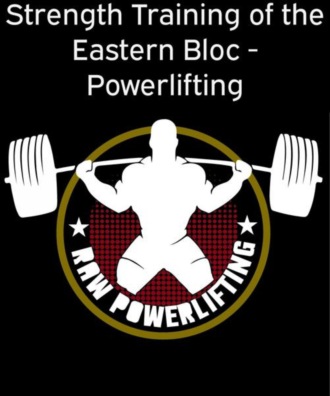
Полная версия
Strength Training of the Eastern Bloc - Powerlifting


POWERLIFTING

By Powerliftingcheck
TABLE OF CONTENTS
STRENGTH TRAINING OF THE EASTERN BLOC - POWERLIFTING
BASICS
THE GENERAL ADAPTATION SYNDROME
PRINCIPLE SPECIFICATION
PRINCIPLE OF FATIGUE MANAGEMENT
SUMMARY
VOLUME, FREQUENCY, INTENSITY
INTENSITY
INTENSITY AND SPECIFICATION
INTENSITY AND MUSCLE GROWTH
VOLUME
INTRODUCTION TO FREQUENCY
VOLUME AND FREQUENCY
THE HIGH VOLUME TRAP
OPTIMUM FREQUENCY
PERIODIZATION BEGINNER, ADVANCED, ELITE
MICROCYCLE AND MESOCYCLE
PRILEPIN TABLE
RUSSIAN COMPLEX SENTENCES
SHEIKO ROUTINE
SMOLOV SQUAT CYCLE
EXTENDED RUSSIAN POWER ROUTINE 9 WEEKS
BULGARIAN METHOD FOR POWERLIFTING
Strength Training of the Eastern Bloc – Powerlifting
Foreword.
This book should give you a little theory and overview of Russian training plans and the Eastern bloc.
Fundamentals of theory and analysis of plans in strength training.
For many more useful information, then visit https://www.powerliftingcheck.de
BASICS
With this series I will be going through some points, with which one can rate a training plan.
THE GENERAL ADAPTATION SYNDROME
Now what does that mean? It is the theory of stress-recovery-adjustment behavior. So the stress refers to the training stimulus you have set. Here, the body is now something "destroyed" or release toxins. Now the dose of the stimulus must be high enough to be considered as a burden and enough "damage" to supply. The body must now repair these damages. What is called recovery. This recovery can be influenced by appropriate nutrition and supplements and therefore also accelerate. After repair, the body will now adapt to better prepare for further stimuli. So, to get less damage from the same stimulus.

As an example: A cellar child goes into the sun and gets sunburn. Now the skin will recover and turn a little brown. Now the cellar child can stay out longer and does not get the next sunburn quite fast.
What does that mean for us? After every stimulus and complete recovery, we must increase the next stimulus. So move more weights from workout to workout.
PRINCIPLE SPECIFICATION
Following the general adjustment syndrome pattern, we now need to perform heavy squats, heavy bench presses, and heavy deadlifts as the powerlifter at the appropriate frequency.
The division of repetitions helps us to do this.
1-5 reps for power
5-10 repetitions for muscle
10-25 repetitions for stamina
One thing must be noted though. With 3 repetitions you will also build muscle. The transition is fluid.
The law of accommodation "law of accommodation" states that the more often the body is exposed to the same stimulus, the less the body will show adaptive response (adaptation). This applies to a large extent to the choice of movement and to a lesser extent to the training intensity.
Let's take the squat. In the first training you will get 100% as return on investment. The 2nd training maybe 80%, the 3rd 60% and the 4th training maybe 40%. Well, if, for example, a paused squat is done, then the carry will be 75%. This means that if you use paused squat as 3rd training, you will end up with more carry over or more adjustment. Thus, get more results for the time invested.
Principle overload
Following the pattern of the general adaptation syndrome, we have to overload the body again and again. So always new stimuli with a higher dose. We can with this.
More weight
More sentences
More repetitions
Or slightly modified exercises (example paused squat)
Means we must do more and more in the course of our powerlifting career!
Also in powerlifting, if you do not do something, or do not train, then you will lose it slowly.
PRINCIPLE OF FATIGUE MANAGEMENT
It is important to understand this principle. The higher the stress on your recovery capacity, the longer the recovery will take.
So your appeal is too high and the next day of training too early, then you will slowly lose weight physically because you train too much. If your training stimulus is too small and the break between days is too long, you will also lose weight physically. So remember. Timing is important here! (timed coordination)
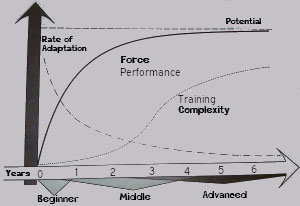
Principle individual differences
Many training programs ignore the law of individual differences. Not every body reacts immediately to the stimuli and volume. For example, some need 5 sets more squat to make progress than other people.
Not everyone can handle the same job.
Biomechanical conditions also influence the training and progress. By way of example, longer legs alter the leverage and, accordingly, adjustments need to be made, which muscles you train more to force further progress.
SUMMARY
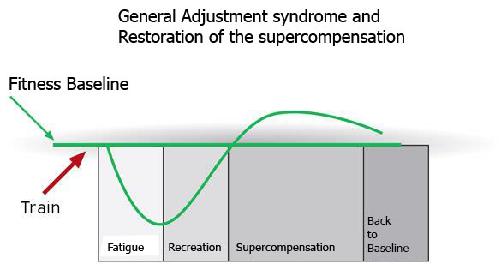
The following points must be looked at to see if a training plan is good.
specification
There must be a lot of heavy squat, heavy bench press and heavy deadlift.
overload
You have to constantly overload your body with more weight, repetitions or sets. No new stimuli, no new adjustments.
fatigue management
Temporal coordination of workouts is important. If the stimulus is too high and there is not enough rest, you will probably get into overtraining and break down. If the stimuli are too small and the breaks too long, then you come into the lower training and will dismantle or stay the same.
individual differences
A plan should be set to your own differences. Each body needs a different dose of stimuli, exercises or volume. Also in view of biomechanics.
VOLUME, FREQUENCY, INTENSITY
Now let’s talk about variables that we can modify perfectly. That's volume, frequency and intensity.
Intensity
The intensity is one of the most important factors. This does not refer to how hard you try, but how heavy the weights are in relation to your maximum weight. For example: You can move Max in the squat 100 kilos exactly once. Now a set of 80 kilos is made, which now corresponds to 80% intensity.
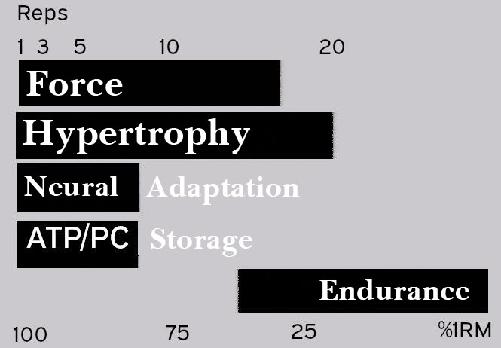
Intensity and Specification
Training in the 90% + range, which corresponds to 1 to 3 repetitions, the training effect will be primarily neural in nature. Simply put, your nervous system will improve its overall efficiency through the maximum levels of muscle compartment. In addition, the coordination of this compartment will improve, leading to further performance improvements.
A huge part of the power used in moving a maximum weight will be neuronal in nature. In order for a program to be able to meet the specification threshold for powerlifting training, you must train frequently or often in the training cycle at the appropriate time in the 90% + range.
As we move the repeating image from top to bottom, the training effect shifts slowly from neuronal efficiency to muscle-building and then muscular endurance. This is mainly due to the fact that low repetition rates are predominantly restricted by force, while higher repetition rates are more influenced by metabolic fatigue factors such as ATP depletion, lactic acid threshold and other endurance components that are not necessarily relevant to powerlifting.
Intensity and Muscle Growth
Probably not less than 75% with only a few exceptions. Muscle building is a necessary component of sustained, consistent progress in powerlifting. You cannot push out an infinite amount of technology and general neural efficiency. At some point you need a bigger engine to drive faster and further. In a good powerlifting program, a lifter will spend time in the 75-85% intensity range. This corresponds to sets of 4-8 repetitions and builds up a larger musculature.
You get what you train. If your training consists of nothing but sets of 5, you will get a nice mix of strength and size. However, 5s are optimal neither for strength nor size. So, spending some time in this area is beneficial but spending solely on this area would make a program non-specific to powerlifting. You have to train hard.
Remember, intensity determines training effect. For powerlifting we want the training effect to be an increase in maximum power production and that involves very heavy weights.
Volume
To quote Mike Tuchscherer, “when the intensity determines the training effect, the volume determines the size of that effect”.
For example, if you expose your skin to sunlight, you will probably get a tan ("a training effect"). If you stay in the sun for a minute, you might not have done enough to provide adequate "stress." The body must not be forced to compensate because you have not overloaded it. If you stay in the sun for two hours, you will get a lot of "stress", but it will probably be too much and you will probably burn. Both are not a good result.
More importantly, there are a wide range of possibilities in the middle. If you spend 15 minutes in the sun, you will get a degree of tanning; If you spend 30 minutes in the sun, you will get another level of tanning. In this case, the time in the sun is our "volume" of stress and the level of tanning is the "size" of the training effect.
In training, we can define the volume in a variety of ways: the number of total reps in a workout, the number of sets, or we can calculate "tonnage." Tonnage is nothing more than the calculation of the total repetitions and sets that you have moved through the weight. For example, if you bend 100x5x5, then you have accumulated (100 * 5 * 5 =) 2500 kilos as total tonnage.
The more tonnage accumulated, the greater the training effect will be. But that also determines the longer you have to wait before you can train again. As with everyone, there is an optimal dose-response relationship.
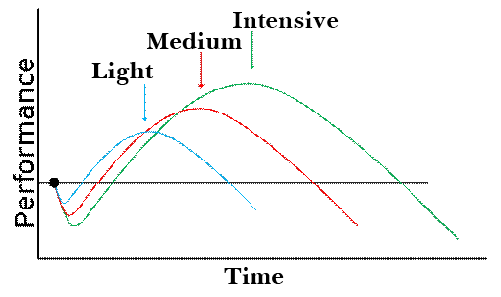
Introduction to Frequency
Frequency simply means how often each discipline is trained. For example, if you work bench press 3 times a week, your frequency for this exercise is exactly 3.
Frequency is very important in terms of recreation management. If you train too often and do not recover enough, then you get into overtraining. If you do not train enough, the body will not make any adjustments and you will not make any progress here either. With both mistakes, the performance will suffer, so it is important to have good time coordination for these two processes.
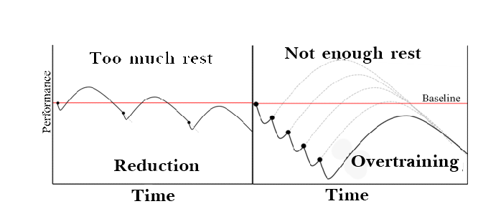
The goal of temporal coordination should be to set another stimulus (stress) at the right time, so that the body must readjust and progress.
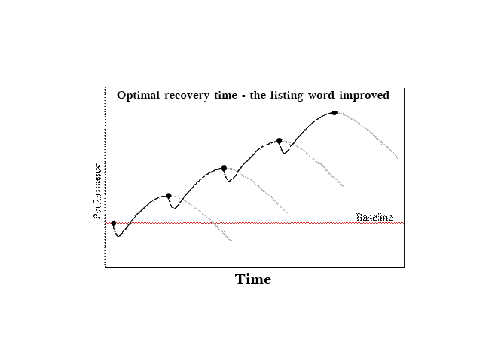
Volume and Frequency
Now we know that a lot of volume during training session needs more time for recovery. So we have to train with less frequency. If you train less volume, you should increase the frequency.
Now the question is: what is the optimal dose?
The relationship between volume and training effect is not straight. Extra volume does not bring the same increase in maximum weight. For example, hypothetically, let's say you know that 205x5x5 will increase the maximum weight by 5 kilos. 205x5x10 does not increase your maximum weight by 10 kilos, even though the volume is twice that. You might get around 7.5 kilos.
The High Volume Trap
Now if more volume produces more training effect, why not train like that? So, what do we have to do to get more adaptation to the stimulus? Your reply is more volume over time. Well, training 200x5x10 (reps x sets) from the beginning will take a tremendous amount of time, energy, and willingness, and since most power-lifters are not professional athletes, they simply do not have the time for several hours every single day work out.
Secondly, the body must first get used to such a high volume. If you jump directly to such a high volume, then you have simply made fewer stress-relaxation adjustment cycles than someone who has been working slowly.
For clear understanding, your competitor will beat you at 200x5x10 by 7.5 pounds, compared to yours at 200x5x5 and 5 pounds. But by the time you have worked your way up to 5 × 10, you will make 5 × 5 more 5 kilos jumps than the one who makes 7.5 kilos.
Optimum Frequency
This frequency is thus determined by the volume that you make on a training day and can recover from it, thereby creating an adjustment. Your frequency could be something like twice a week. However, at some point, you will reach the point where you have to put so much volume into a training day that you spend more than 3-4 hours in the studio to make progress. Now it would probably be time to increase the frequency and divide the volume.
The key is to note the recovery time as well as to do the next workout where the physical performance is at maximum.
Конец ознакомительного фрагмента.
Текст предоставлен ООО «ЛитРес».
Прочитайте эту книгу целиком, купив полную легальную версию на ЛитРес.
Безопасно оплатить книгу можно банковской картой Visa, MasterCard, Maestro, со счета мобильного телефона, с платежного терминала, в салоне МТС или Связной, через PayPal, WebMoney, Яндекс.Деньги, QIWI Кошелек, бонусными картами или другим удобным Вам способом.




